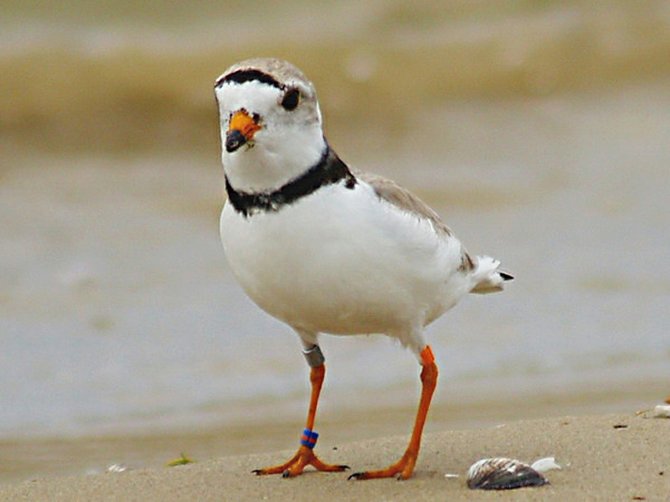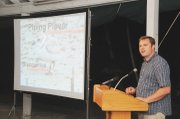RESEARCH has shown that The Bahamas is a critical winter home for the Piping Plover, an endangered bird species.
The bird is on the top ten list of endangered birds by the National Audubon Society. It is estimated that only 8,024 individuals of the species exist globally and a 2011 census found more than 1000 of those winter here in The Bahamas.
The Bahamas National Trust in partnership with the National Audubon Society, US Fish and Wildlife Services and others, has started a research project to document and protect the most important places for the species in The Bahamas.
Matt Jeffrey, Senior Programme Manager, International Alliances Programme, National Audubon Society and Walker Golder, Deputy Director, Audubon North Carolina, shared the research at a public meeting held at the Trust last week.
Jeffrey said that just as the Audubon worked with the Trust to bring the flamingo back from near extinction in the 50s and 60s, similarly they wanted to ensure the survival of another endangered bird.
“Our relationship with the Trust continues today with finding yet another important species here in the Bahamas. Working with and through the Bahamas National Trust to ensure that Bahamians have pride and knowledge about the importance of this bird…and then work together to ensure full life cycle conservation,” said Jeffrey.
Jeffrey presented a detailed presentation of the most up-to-date research at the meeting and explored the issue of how The Bahamas should proceed in its management of the bird and exactly how much could be done for the Piping Plover locally.
Walker Golder reiterated the importance of the data found in The Bahamas.
“One of the things biologists need is information of where these birds are in critical points in their lifecycle in order to protect them, and now we know about where piping plovers spend their winter because of the work that’s been done here in the Bahamas,” said Golder.
The 2011 International Plover Census was a collaboration between several agencies including the Bahamas National Trust, the National Audubon Society and Audubon North Carolina and was the furthest reaching survey of the piping plover thus far.
The census involved thirty-one researchers in fourteen islands over a two-week period.
The Berry Islands and the Joulter Cays off Andros were two new globally significant sites found in The Bahamas.
The goal now is to create site-specific management to protect this very important shorebird.






Comments
Use the comment form below to begin a discussion about this content.
Sign in to comment
Or login with:
OpenID